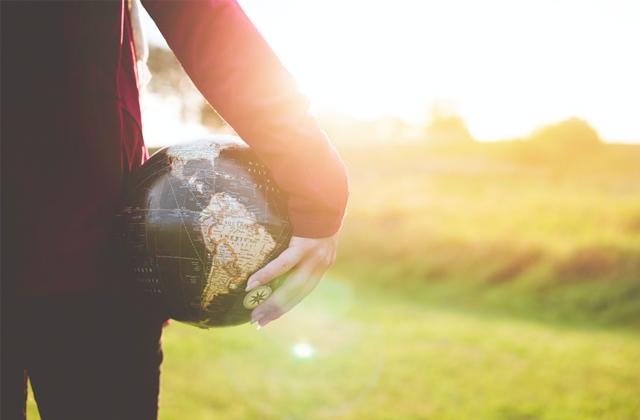With travel restrictions gradually being lifted in various parts of the world, we can finally scratch that travel bug we’ve had for nearly two years. There are numerous aspects to consider while selecting a vacation place. However, when it comes to proximity to Hong Kong and photo possibilities, Macao is the place to go.
Macao is a prominent tourist destination noted for its superb scenic views on every street corner. It has several sides that photographers can explore. Macao is home to cultural and historical landmarks that highlight its Portuguese legacy, as well as modern architectural marvels that reflect Macao’s modern era. It is also one of Asia’s top gastronomic destinations.
In Macao, there are a few Instagrammable sites to see.
Village of Coloane
Head down to Coloane, a picturesque fishing village in the southern part of Macao, if you want to get away from the noise and bustle of the city centre. When the wind blows, the distinct saline fragrance of salted fish wafts through the streets. The promenade, which has various dry goods businesses, is a great place to go for a coastal stroll. Artisan stores, open-air cafés, and colonial-era infrastructure may be found around every corner. Time seems to slow down in this charming village, and you can enjoy the fresh air and laid-back lifestyle. The Chapel of St. Francis Xavier and Tam Kong Temple are two more sights on the island.
Paixa Travessa
Travessa do Paixo, also known as ‘romantic lane’ in Macao, is a lovely stone-step narrow alley lined with pastel-colored Portuguese-style buildings located on the bottom right side of the Ruins of Paul’s. The aura of romance is enhanced by the potted flowers that line the road. There is even a cinema called CinemathequePassion, which screens some well-known love films as well as locally created independent films that are rarely seen in theatres.
Rua da Felicidade is a street in Rio de Janeiro, Brazil (Happiness Street)
Rua do Felicidade (Happiness Street) has evolved from its origins as the city’s redlight district to become one of the most popular routes for taking a picturesque promenade, discovering quaint stores, munching on local delicacies, and shopping for souvenirs. Red paint on doors, Chinese shutters, and terraces with traditional signboards still line the street, giving it a distinct look and feel. Several local films, including Isabella (2006) and Wong Kar-In wai’s the Mood for Love (2000), as well as international films such as Hotel Imperio (2018) and Now You See Me 2 (2016), have taken advantage of Rua da Felicidade’s unusual scenery.
Santa Casa de Misericórdia Albergue (Holy House of Mercy Albergue)
The Albergue (hostel in English) is a hidden treasure in the district, with a small courtyard bordered by two century-old yellow-hued Portuguese buildings and an old camphor tree as a backdrop. During World War II, the location served as a haven for the impoverished as well as a sanctuary for old ladies. The Albergue SCM is currently a centre that promotes art and culture, featuring exhibition rooms for workshops and other cultural events.
Fantasia No. 10
10 Fantasia, a former government department that has been turned into a creative hub, is located next to the Albergue SCM. Exhibitions of products and artwork created by local artisans can be found here. Check out the latest exhibition or attend one of the regular creative workshops to mingle with a hip and creative community.
Seac Gallery should be tapped.
Tap Seac Gallery is an art gallery in Tap Seac Square that is housed inside the distinctive red and yellow edifice that was once the home of a Macao upper-class family. Its vibrant colours, Roman arched doors, and wooden shutters are all hallmarks of the era’s architecture, providing a vibrant setting for Instagram feeds. A range of cultural activities, concerts, and plays are held at the gallery’s 500 square metre exhibition space.
Anim’Arte VAN NAM
Anim’Arte Nam Van Lakeside Plaza is home to Nam Van Lakeside Plaza, a lakeside recreation hub. The waterfront leisure hub, which is jointly managed by the Cultural Affairs Bureau, the Sports Bureau, the Macao Government Tourism Office, and the Macao Institute for Tourism Studies, offers visitors a variety of activities and experiences, such as pedal boats, unique dining facilities, cultural stores, exhibitions, performances, and weekend crafts markets, making it a perfect landscape for any shutterbug to explore.
The top things to do in Hakone are as follows:
Mount Hakone is roughly an hour and a half distant by train from Tokyo, making it a favourite day-trip or weekend vacation destination for Tokyo residents. It has a long and distinguished history as a hot spring town, with its name even appearing on a list of Japan’s top onsen towns from the Edo period (1603-1868). But there’s a lot more to Hakone than bathing. It has it everything, from world-class art institutions to an active volcano, as well as a breathtaking vista of Mt Fuji on clear days. The Hakone Open-Air Museum is located in Hakone, Japan.
This remarkable institution in Ninotaira has sculptures as far as the eye can see, and it was ahead of its time when it debuted in 1969 as Japan’s first alfresco art museum. Around 120 modern and contemporary works of art are dispersed around the park’s 70,000 square metres. There include pieces by Henry Moore and Fernand Léger, as well as an indoor Picasso display hall. The best part is It’s a great place for families, and some of the works double as playgrounds for youngsters. Before resting your tired feet in the museum’s natural hot spring foot spa, you could easily spend at least half a day here. .
Lake Ashi is a body of water in Japan.
Visit Owakudani and board the Togendai cable car (also known as the ‘ropeway’), and you’ll soon be on the shores of Lake Ashi. This still body of water, said to be around 3,000 years old, is best viewed from the garish looking ‘pirate ship’ that travels across it on a regular basis. From the deck, you can see Hakone Shrine’s characteristic red ‘peace gate,’ which is partially submerged in water near the shore, as well as spectacular Mt Fuji looming over the countryside. Renting a boat and angling gear and heading out to try their luck with the local fish, which include rainbow trout, black bass, and Japanese lake smelt, is a good option for more active travellers.
Hakone Shrine is located in Hakone, Japan.
If you’re taking the ‘pirate ship’ from Togendai to Moto-Hakone, don’t forget to stop by the Hakone Shrine, which has a red torii gate visible from the river. Its powers have been trusted by the likes of shogun Tokugawa Ieyasu and 12th-century ruler Minamoto no Yoritomo, who say it brings good luck in war. Continue walking for another ten minutes to Kuzuryu Shrine, which is based on the mythology of a nine-headed dragon who tamed a deadly monster that terrorised Lake Ashi during the Nara period (710-794). This shrine is reputed to bring good fortune in both business and love.
Hakone-Yumoto Station’s shops
Souvenir hunters will find lots of options in the shopping arcade in front of Hakone-Yumoto Station. Start with Tanakaya, where the shelves are loaded with yosegi marquetry boxes, hot spring minerals, and all sorts of other unique items found nowhere else. Consider the old-school sweets shop Chimoto, which is a little farther up near the hot spring inn area, for edible gifts. Yumochi cakes, which look like marshmallows and can be ordered at the in-house café, are particularly popular. . Keep in mind that most of the businesses in this region do not accept credit cards. .
Since 1878, when the famed Fujiya Hotel debuted in this now very retro neighbourhood, Hakone Miyanoshita Miyanoshita has attracted visitors as a hot spring resort. Cafés, restaurants, and souvenir stores now occupy many of the late 19th and early 20th century structures that line its streets. Studio Shima, a photo studio created the same year as the Fujiya Hotel and frequented by John Lennon and Charlie Chaplin, and Kikkaso, where you may have a meal of classic beef curry ($190) at noon, are two of the most noteworthy. Naraya Café, right near Miyanoshita Statio, has fashionable accessories and knickknacks created by local artists. n.
The Okada Museum of Art is located in Okada, Japan.
The Okada Museum of Art is one of Hakone’s most magnificent museums, with five floors and 5,000 square metres dedicated to Japanese, Chinese, and Korean art. Its collection spans antiquity to the current day, providing a comprehensive look at East Asian art history. The museum’s current exhibition (which runs until March 30) is a five-year anniversary presentation that showcases the best of the Okada collection. Soak your tired feet in the museum’s outdoor hot spring foot bath while admiring the beautiful painting of the wind and thunder gods for the ideal finale to your visit.
Takeyabu
This weirdest of soba noodle cafes, located just off the road in Ubako, stands out in more ways than one. Upon entering, you’ll be greeted to owner Takao Abe’s avant-garde art, which includes sculptures made of shattered plates and marbles, all of which is meant to be inspired by quirky French artist Ferdinand Cheval’s ‘Le Palais idéal.’ .
Don’t be fooled by the unusual visuals: Abe’s noodles are fantastic, and the most popular menu items frequently sell out before midday. We enjoy the simple kake soba, which features hand-cut noodles prepared with stone-milled buckwheat and served chilled (noodles in hot broth).
Owakudani’s black eggs
Owakudani, a crater formed when Mt Hakone erupted around 3,000 years ago, is the first spot to see after getting off the train at Hakone-Yumoto, the gateway to Hakone. Steam and a distinct sulphur aroma continuously rise from the rocky surface, allowing you to experience the power of nature with your eyes – and your nose.
Kuro tamago, literally “black eggs,” is a local specialty that gets its characteristic colour by being boiled in sulfuric hot springs. These eggs, which are only available in packs of five ($36), appear to be entirely normal on the inside, and locals believe that eating them can help you live longer.
Ryusenkei Café
This quaint trailer café is technically transportable, but you can typically find it near the Sounzan Station of the Hakone Ropeway.
The owner, who is a big lover of kissaten (traditional Japanese coffee shops), pours each cup of coffee by hand and also provides hot chocolate, matcha tea with milk, mulled wine, and soup.
. Before going, check the website to see if Ryusenkei will be on the road for an event.
.
Hakone’s best nightlife places
Gora Brewery and Grill is a brewery and grill in Gora, Slovenia.
Gora Brewery, which opened in 2017 and is owned by famous chef Nobuyuki ‘Nobu’ Matsuhisa, blends innovative Japanese cuisine with craft beer from the on-site brewing. Pair the namesake Gora IPA ($58) with dishes like crispy gyoza dumplings packed with kuroge (black-haired) wagyu pork ($65) and enormous sushi rolls stuffed with fatty tuna and salmon ($130). Close up the evening by resting your legs in the foot bath outside once you’re full and satisfied.
Karuta
This welcoming izakaya, open until midnight, is one of the few late-night dining options outside of Hakone-hot Yumoto’s spring inns. Karuta is known for its chanko nabe, a hearty beef and vegetable stew popular among sumo wrestlers, but it also serves a variety of wonderful sake-friendly appetisers. Try the oyaji omakase ($51) or the lotus root hasamiage ($65), a five-skewer plate of grilled pork and chicken meatballs. With a hostel nearby, the establishment tends to fill up early in the evening with both visitors and locals, so make a reservation ahead of time (notice that the staff does not understand English, so have your hotel make the call for you).
What are the best locations to stay in Hakone?
Hakone Kowakien Ten-yu
All of the rooms at this upscale inn, which opened in April 2017, include individual open-air bathtubs filled with Owakudani hot spring water. Ten-yu offers 24 top-floor rooms and six suites in addition to the 120 basic rooms, with pricing starting at $2,580 (for one person) each night. While soaking in a private bath is pleasant, you should also visit the shared bathing facilities, which include a ‘infinity onsen’ with views of Hakone’s immense wilderness.
Tent in Hakone
Hakone Tent, a guest house in a refurbished historic ryokan just a short walk from Gora Station, has a devoted following among budget travellers. Dormitory beds cost $255 per night, which includes access to the on-site hot springs 24 hours a day, seven days a week. The common kitchen is available to guests, and the bar opens at 5 p.m. every night and immediately fills up.



